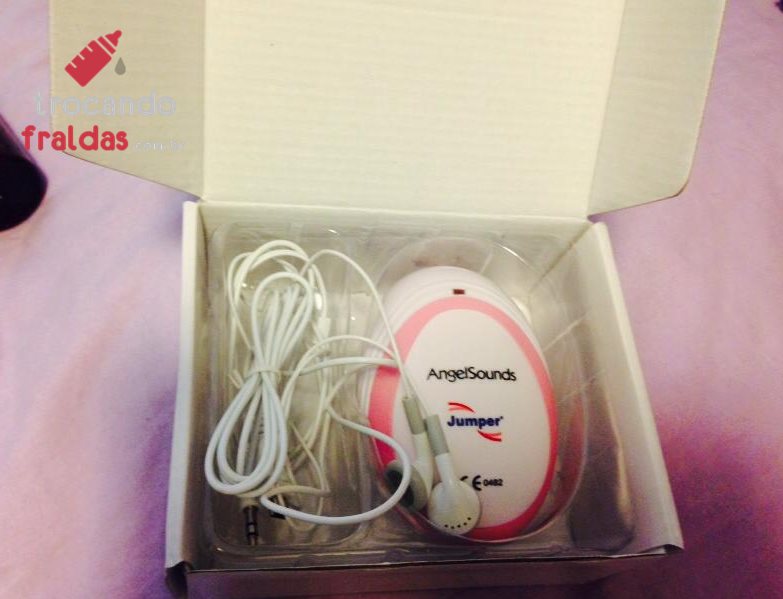And what expectant mother wouldn’t want to have a portable ultrasound device at home? The truth is, regardless of how many pregnancies a woman has had, hearing or seeing the baby is always an amazing feeling! Of course, it would also make things much easier and would ease a lot of worries, maternal anxieties, and would help satisfy the urge to see the baby every day! But since it’s still not possible or medically advised to have ultrasounds so frequently1, having a fetal monitor is now a reality—at least there are ways to monitor your baby at home by listening to the heartbeat.
A fetal monitor like Angel Sound is a dream for many moms and is becoming more and more accessible for Brazilian mothers. The at-home fetal monitor is a simpler version of the hospital or doctor’s office fetal monitor.

You could say that the at-home fetal monitor works on the same principle as the Doppler device that picks up the sound of the baby’s heartbeat in the doctor’s office, except it has the advantage of being on hand anytime mom wants to listen.
How Does the Fetal Monitor or Angel Work?
The fetal monitor works by amplifying the heart sounds picked up by microphones using Doppler technology sensitive to even the slightest noise from a heartbeat. It’s important to know that in order to detect the baby’s heartbeat—and not confuse it with your own—the gestational age is very important, as is the heartbeat’s intensity.
Heartbeats
Fetal heartbeats are much faster than the mother’s. For example, a baby can have between 120 and 180 beats per minute2! To detect the fetal heartbeat, pregnancy should be from the 12th week, and in some cases, even at the 12th week, depending on the baby’s position, the heartbeat may not be detected by the fetal monitor. So if you haven’t managed to hear it yet, try again next week.
So, How Do You Use the Fetal Monitor?
Lying down, and preferably with your bladder full, the expectant mother searches for the baby’s heartbeat with the fetal monitor. Depending on the stage of pregnancy, it can be lower down from the navel, generally before the 16th week.
Gradually, as the baby grows, you can search higher up. Remember, the baby’s heartbeat is faster, and no, the at-home fetal monitor does not harm the baby or the pregnancy, since it does not require any radiation to work3.
It simply captures sound waves, nothing more. Don’t forget to always use a water-based gel sold in pharmacies, the same gel used in ultrasounds.
Explanatory Video
The fetal monitor can vary in price, currently costing between R$ 100 and R$ 250 depending on the brand and model. The most commonly used and well-known in Brazil is Angel Sound, which costs around R$ 140 in Brazil or about $35 USD for those who have the opportunity to buy it abroad.
Stores selling the device are quite varied. In Brazil, there’s Mercado Livre, which has immediate delivery, and some sellers who import to sell. It’s worth looking around to find the model and price you want.
There are also some models of fetal monitors with or without a digital display that shows the number of heartbeats, and it’s worth investing a little more for this convenience.
There are various models and brands of fetal monitors, but Angel Sound in particular has two headphone jacks, so you can peacefully enjoy listening to the baby with your partner.
Some fetal monitors also have the feature of recording the baby’s heartbeat to listen to later or to share with family members. Most monitors run on batteries and are very light and easy to carry. Remember, you can monitor your baby as many times as you want and, with time, you’ll get the hang of using the fetal monitor!
A fetal monitor is certainly a great gift for pregnant women and will definitely be a big hit!
See also: Changes in the Body During Pregnancy – What to Expect
Photo: christophandre











